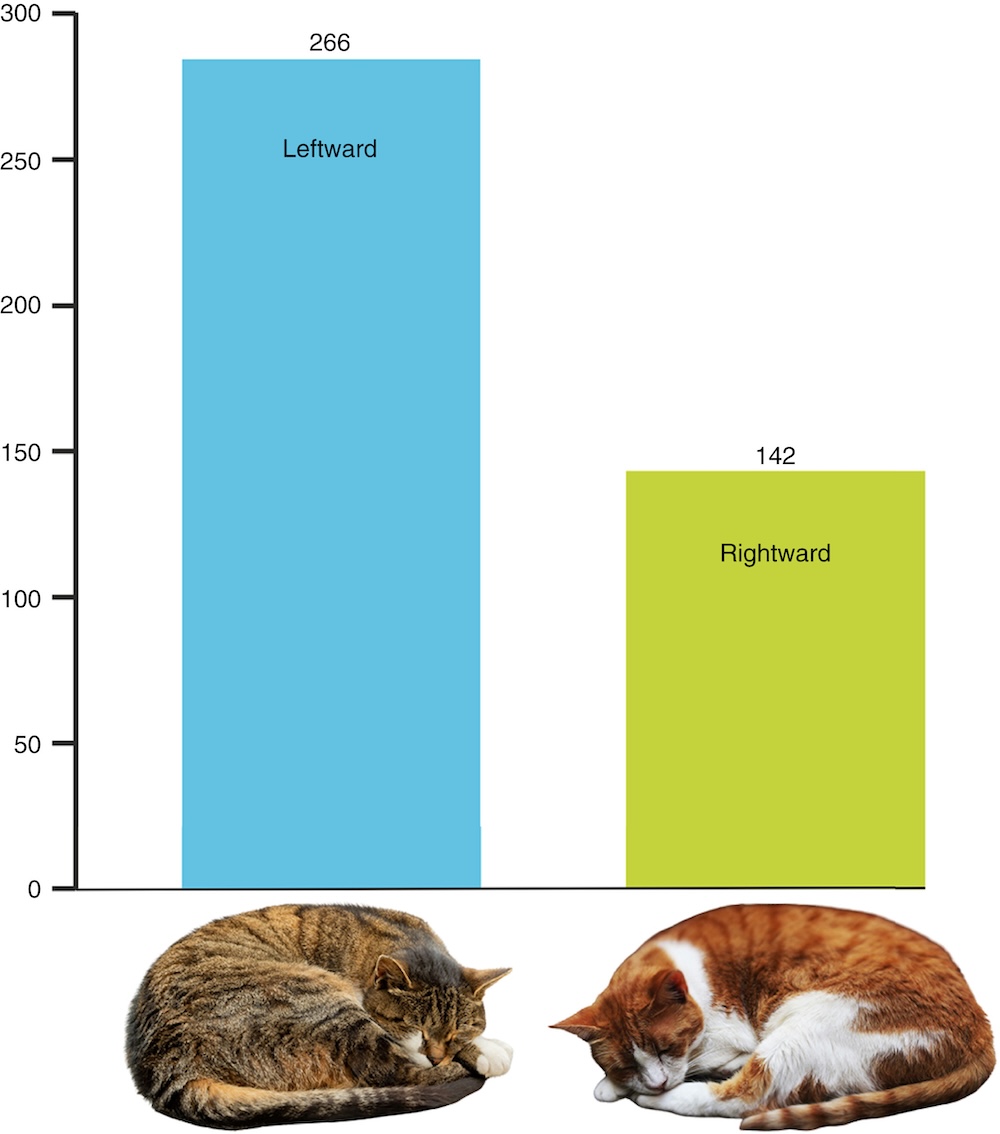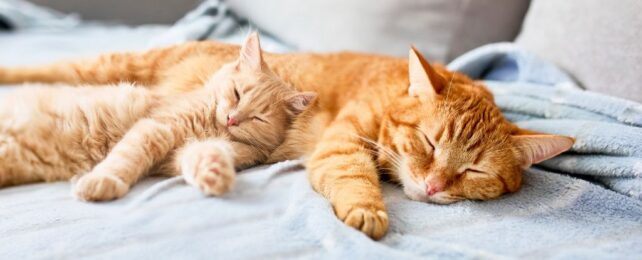Cats sleep between 12 and 16 hours a day, and a new study suggests that most of them prefer to catch these Z's while lying on their left side.
Cats are already known to prefer an elevated position when they nap, like the top of a cat tree, or somewhere in the stack of suitcases on your wardrobe, far out of reach from ground predators and cuddle-hungry owners.
This behavior allows them to see any threats coming from afar. The study's authors reasoned that cats' sleeping positions – whether they lie on their left or right side – may serve similar functions.
"Asymmetries in behavior can have advantages because both hemispheres of the brain specialize in different tasks," says behavioral neuroscientist Onur Güntürkün, from Ruhr University Bochum in Germany.
Related: Does Your Cat Keep Waking You Up Stupidly Early? These Expert Tips Could Help
Güntürkün and his team analyzed the sleeping positions of cats in 408 carefully chosen YouTube videos, which revealed a statistically significant leftward bias. Two-thirds of the cats chose to lie on their left, a position that leaves their left visual field unobstructed by their own body.

The left visual field feeds into the right brain, which is associated with spatial awareness, threat identification, and the coordination of quick escape. So this sleeping position may grant the cat a quicker reaction time when woken by a predator (or needy human).
"Sleep is one of the most vulnerable states for an animal, as anti-predator vigilance is drastically reduced, especially in deep sleeping phases," the study's authors write.
"We are inclined to believe that the significant leftward bias in sleeping position in cats may have been evolutionarily driven by hemispheric asymmetries of threat processing, but additional factors cannot be excluded."
This research was published in Current Biology.
